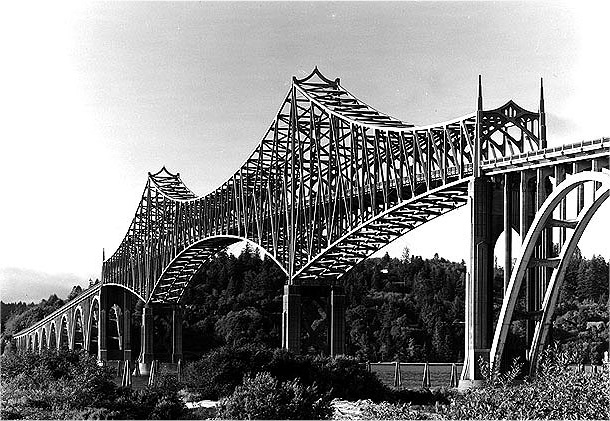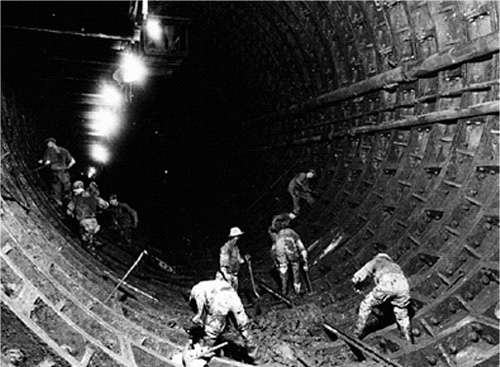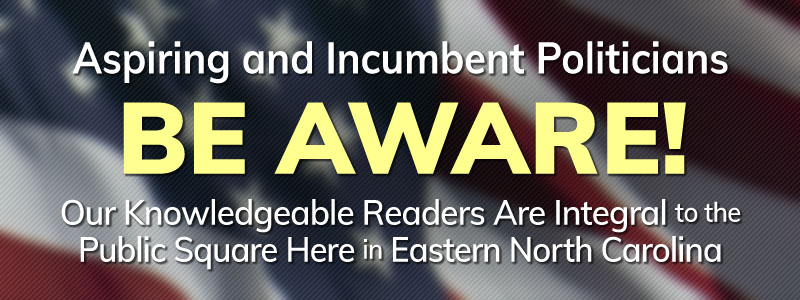Publisher's note: We believe the subject of history makes people (i.e., American people) smarter, so in our quest to educate others, we will provide excerpts from the North Carolina History Project, an online publication of the John Locke Foundation. This forty-ninth installment, by Jonathan Murray, was originally posted in the North Carolina History Project.
Established by
The construction of the Lincoln Tunnel: Above.
Title II of the National Industrial Recovery Act (NIRA), the Public Works Administration (PWA) was an expansive, Depression-era Federal government spending program that aimed to create jobs while improving the nation's infrastructure. Although the PWA was not vested with the sweeping powers of the
National Recovery Administration, it affected nearly every United States county and indelibly altered North Carolina. Yet the PWA did not move the United States toward recovery.
Though the creation of the PWA occurred at the end of
President Franklin Delano Roosevelt's first "hundred days" in office, Roosevelt's predecessor Herbert Hoover had, even before his own presidency, supported public works projects. Even so, Hoover never created a government agency dedicated to public works projects, and he supported only projects that paid for themselves in eventual revenues.
Roosevelt, on the other hand, believed public works projects did not have to pay for themselves in revenues. By putting people "back to work," he believed, the projects would one day stimulate the economy and prove beneficial, irrespective of the utility of the projects themselves. As historian Amity Shlaes and others have noted, the PWA was a program of what economists call make-work. While the object of normal work is to create things of value, the object of make-work is to keep people employed. Roosevelt thought that by keeping people employed first and improving U.S. infrastructure second, the PWA could provide much-needed relief to the U.S. economy.

This project by the PWA is the proper way to inact a federal stimulus, not the Solyndra based stimulus of the Obama administration: Above.
The PWA was not simply a monolithic government enterprise that began in 1933. Roosevelt predicted that PWA projects would benefit industries directly involved with PWA projects (such as the construction industry) and those that might derive some remote benefit (such as the building materials industry). While the PWA undertook a few projects on its own, it mainly financed state and local projects with grants and loans. Because the agency had immense initial funding of $3.3 billion, strong leadership of the PWA would be needed to prevent misallocation of funds or outright malfeasance. From 1933 until 1939, Secretary of the Interior Harold Ickes directed the PWA. In addition to being a scrupulous manager, Ickes implemented strict standards for grantmaking and required prompt loan repayment. He hired an expert team of public works planners, mainly engineers who had worked with the Federal government during the Hoover administration.
Despite Ickes's noble intentions, he was not able to make the PWA an effective contributor to economic recovery. Ickes was so intent on preventing corruption that all project proposals submitted to the PWA underwent a thorough - and slow - review process. Many projects, from the Chicago Subway to the Grand Coulee Dam, were eventually approved and completed. Such projects, however, were completed slowly and most often by private construction companies, which employed workers in no need of relief. Consequently, the PWA did little to decrease unemployment.
In North Carolina, state government and private interests severely restricted the activities of the PWA. Most PWA projects required the cooperation of state and municipal governments; such cooperation was not forthcoming in North Carolina. A few major projects were completed: the Blue Ridge Parkway, the expansion and modernization of Fort Bragg, and the conversion of the Cape Fear River into a waterway suitable for navigation.
Such projects, however, were not typical. Many projects proposed by the PWA were blocked by North Carolina politicians under the influence of large private businesses. The most well-known instance of such obstruction occurred in 1937, when the North Carolina General Assembly considered six PWA-sponsored bills that relaxed rules constraining municipal cooperation with the agency. Governor Clyde R. Hoey considered the bills routine legislation and believed that they would pass easily. But to the leaders of the North Carolina-based Duke Power Company, these bills augured the construction of taxpayer-supported municipal power plants that competed unfairly with their own. To preclude such competition, Duke Power lobbied aggressively against the bills, and all six were voted down.
The PWA met an unceremonious end. In 1939, it was assimilated into the Federal Works Agency. Subsequently, the importance of the PWA declined rapidly, and it was dissolved entirely in 1943 by executive order. Although its projects have come to symbolize the New Deal, they did little to lift the U.S. economy. In North Carolina, the PWA employed a total of 6,938 workers during the 1930s - too few to allay the state's economic misery.
Sources:
Philip Abbott, The Exemplary Presidency: Franklin D. Roosevelt and the American Political Tradition (Amherst, 1990); Douglas Carl Abrams and Randall E. Parker, "Great Depression," in Encyclopedia of North Carolina, ed. William S. Powell (Chapel Hill, 2006); Douglas Carl Abrams, North Carolina and the New Deal (Jackson, 1992); Anthony J. Badger, North Carolina and the New Deal (Raleigh, 1981); Roy Jenkins, Franklin Delano Roosevelt (New York, 2003); Robert K. Murray, "Herbert Hoover and the Harding Cabinet," in Herbert Hoover as Secretary of Commerce: Studies in New Era Thought and Practice, ed. Ellis Wayne Hawley (Iowa City, 1981); Michael E. Parrish, The Hughes Court: Justice, Rulings and Legacy (Santa Barbara, 2002); Records of the Public Works Administration (overview), http://www.archives.gov/research/guide-fed-records/groups/135.html (accessed March 2009); Amity Shlaes, The Forgotten Man: A New History of the Great Depression (New York, 2007); Cass Sunstein, The Second Bill of Rights: FDR's Unfinished Revolution and Why We Need It More Than Ever (New York, 2006); and Margaret Weir, Politics and Jobs: The Boundaries of Employment Policy in the United States (Princeton, 1993).














 This project by the PWA is the proper way to inact a federal stimulus, not the Solyndra based stimulus of the Obama administration: Above.
This project by the PWA is the proper way to inact a federal stimulus, not the Solyndra based stimulus of the Obama administration: Above.










